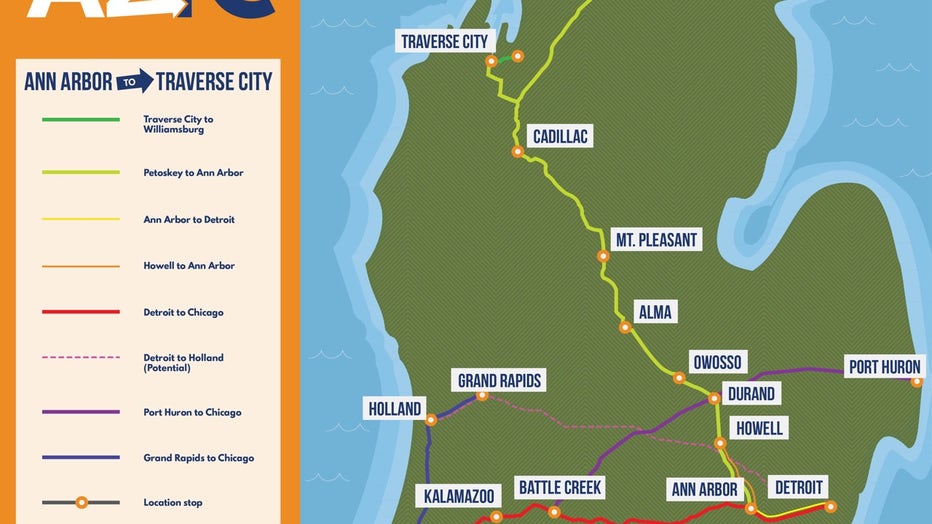Tests for new Michigan train between Ann Arbor and Traverse City on hold
The coronavirus pandemic has forced supporters of a new passenger train service to northern Michigan to put off plans for test rides on the proposed 240-mile line.
The Detroit Free Press cited backers of the Ann Arbor-to-Traverse City route as saying those test runs were slated to start in 2021. They are now on hold, said James Bruckbauer, deputy director of The Groundwork Center For Resilient Communities, a nonprofit organization that is leading the push for the new line.
Test runs along the corridor are part of a multistep process that will also include deciding on an operating structure, but “we’re just not sure when we’re going to be able to do that yet because of COVID-19 concerns,” Bruckbauer said.

The idea for using the line along existing tracks grew out of discussions in the Traverse City area about spurring development and economic growth. It also came as the Michigan Department of Transportation was drawing up a state rail plan.
“The tracks are still in place, and they’re still in pretty good shape,” Bruckbauer said. “We just looked at that and said, ‘Hey, here’s an opportunity here to just see is the potential for passenger trains on these tracks.’”
The passenger service would pass through Owosso, Alma, Mount Pleasant and Cadillac, among other communities. Advocates say it would also give people living along the line more flexibility in commuting to jobs along or near the route.
A 2018 feasibility study by Bruckbauer’s group concluded that the passenger train service could draw 1.5 million riders annually and generate $100 million a year in revenue by 2040.
“We have found that this idea is attractive to what I call the next generation worker, who wants to live and thrive in Michigan without depending on a car to get around,” Bruckbauer said. “So this is really about Michigan’s mobility future.”
Among the issues that must addressed is whether the service will be operated as a non-profit or for-profit, and who would pay for certain expenditures, including repairing some sections of the track.
The feasibility study estimated that the line could be operational in less than a decade with strong public backing, and with support from state and federal agencies.

